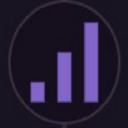-
 bitcoin
bitcoin $111743.690167 USD
0.54% -
 ethereum
ethereum $3950.699791 USD
0.55% -
 tether
tether $1.000164 USD
-0.01% -
 xrp
xrp $2.611685 USD
2.58% -
 bnb
bnb $1122.616845 USD
1.30% -
 solana
solana $193.462394 USD
-0.26% -
 usd-coin
usd-coin $0.999872 USD
-0.03% -
 dogecoin
dogecoin $0.196092 USD
-1.61% -
 tron
tron $0.296693 USD
-0.41% -
 cardano
cardano $0.652995 USD
-0.60% -
 hyperliquid
hyperliquid $44.316120 USD
12.98% -
 chainlink
chainlink $17.906269 USD
0.05% -
 ethena-usde
ethena-usde $0.999193 USD
-0.02% -
 stellar
stellar $0.326600 USD
1.70% -
 bitcoin-cash
bitcoin-cash $513.235984 USD
1.57%
How can I avoid liquidation when trading ADA contracts?
In ADA futures trading, liquidation occurs when margin falls below maintenance levels, often due to high leverage or volatility—monitoring your liquidation price is crucial for risk control.
Oct 18, 2025 at 01:37 am
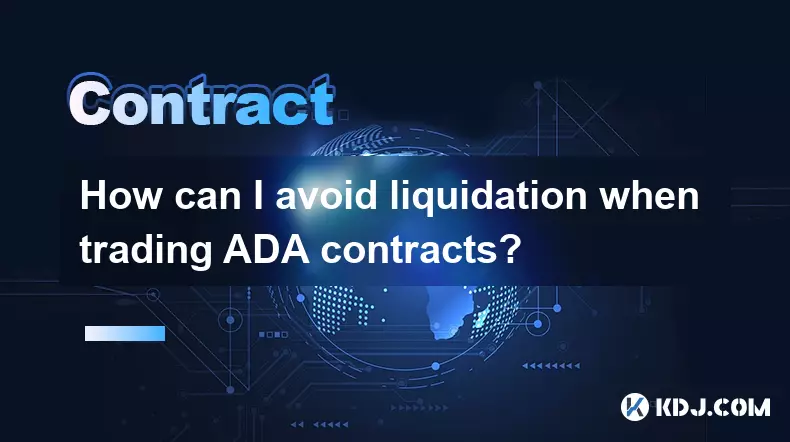
Understanding Liquidation in ADA Futures Trading
1. Liquidation occurs when a trader’s margin balance falls below the maintenance threshold required to keep a leveraged position open. In ADA futures trading, this typically happens due to adverse price movements that erode equity in the account. Traders using high leverage are especially vulnerable because small price shifts can trigger automatic closure of their positions by the exchange.
2. Each futures contract has a liquidation price determined by the entry price, leverage level, and fees. If the market price of ADA reaches this point, the position is closed, often at a significant loss. Monitoring this price closely allows traders to take preventive action before it's too late.
3. Exchanges calculate liquidation based on mark price rather than last traded price to prevent manipulation. This means even if the order book shows stability, the funding rate or index price deviation could push the position toward liquidation.
Maintaining awareness of your liquidation price relative to current market conditions is essential for risk control.Strategies to Reduce Liquidation Risk
1. Use lower leverage whenever possible. While high leverage amplifies gains, it drastically reduces the buffer against volatility. For ADA, which can experience sharp swings during major network updates or market-wide sell-offs, conservative leverage like 5x or less improves survival rates during turbulence.
2. Set stop-loss orders strategically below key support levels for long positions, or above resistance for shorts. These act as circuit breakers, limiting drawdown without relying solely on margin buffers. Stop-losses should be placed considering recent volatility and not too close to the entry to avoid being stopped out by noise.
3. Increase margin manually when the market moves against your position. Some platforms allow adding margin to open positions, effectively lowering the liquidation price. This requires active monitoring but gives traders more control over their exposure.
4. Diversify across different assets instead of concentrating heavily on ADA alone. Overexposure to one cryptocurrency increases systemic risk, particularly when macro factors affect the entire altcoin sector simultaneously.
Risk management tools like stop-losses and conservative leverage form the foundation of sustainable contract trading.Monitoring Market Conditions and Funding Rates
1. Keep track of funding rates on perpetual contracts. High positive funding indicates excessive long bias, which may precede a correction. Conversely, extremely negative funding suggests oversold conditions that could rebound. Adjusting positions ahead of such reversals helps avoid liquidation during squeezes.
2. Watch Bitcoin’s price action closely, as ADA often follows BTC trends. A sudden drop in Bitcoin can drag down ADA regardless of its fundamentals, triggering cascading liquidations across altcoin futures markets.
3. Pay attention to upcoming Cardano network developments such as hard forks, protocol upgrades, or staking reward changes. These events create uncertainty and increased volatility, raising the likelihood of hitting liquidation points unexpectedly.
4. Utilize alerts from exchanges or third-party tools to notify you when ADA approaches critical technical levels or your personal liquidation threshold. Real-time notifications enable faster response times than manual checks.
Choosing the Right Exchange and Tools
1. Select an exchange with robust risk engine infrastructure and transparent liquidation mechanisms. Platforms that offer partial liquidation instead of full position closure give traders a better chance to recover from temporary dips.
2. Use trading interfaces that display real-time P&L, estimated liquidation price, and margin ratio prominently. Visual indicators help assess danger zones quickly, especially during fast-moving markets.
3. Leverage analytics dashboards that show aggregate open interest and volume trends for ADA futures. Sudden spikes in open interest combined with price stagnation may signal impending volatility.
4. Avoid exchanges with frequent downtime or delayed execution during high volatility. Technical failures can prevent timely adjustments, increasing the chance of unwanted liquidation.
Frequently Asked Questions
What is the difference between mark price and last traded price in ADA futures?The mark price is used to determine liquidations and is derived from the underlying index and funding rate, preventing manipulation. The last traded price reflects actual transactions but can be volatile and misleading for margin calculations.
Can I get liquidated even if the market recovers afterward?Yes. Once a position is liquidated, it is closed immediately. Even if ADA rebounds shortly after, the loss is irreversible. This highlights the importance of proactive risk management before reaching the liquidation point.
Does increasing my position size affect my liquidation price?Adding to a losing position without adjusting leverage or stop levels worsens the situation. It changes the average entry and may move the liquidation price closer to the current market value, increasing vulnerability.
Are isolated and cross-margin modes equally risky for ADA trading?Isolated margin limits risk to the allocated amount, making it easier to manage per-trade exposure. Cross-margin uses the entire wallet balance, offering more breathing room but risking total account depletion if multiple positions fail.
Disclaimer:info@kdj.com
The information provided is not trading advice. kdj.com does not assume any responsibility for any investments made based on the information provided in this article. Cryptocurrencies are highly volatile and it is highly recommended that you invest with caution after thorough research!
If you believe that the content used on this website infringes your copyright, please contact us immediately (info@kdj.com) and we will delete it promptly.
- Essex Post Office, 5p Coins, and King Charles: A Royal Mint Revelation!
- 2025-10-23 10:30:16
- Waymo's Newark Airport AV Tests: Alphabet's AI Gamble Pays Off?
- 2025-10-23 10:30:16
- King Charles 5p Coins: A Royal Flush in Your Pocket?
- 2025-10-23 10:35:18
- Solana, Crypto Advisory, and Forward Industries: A New York Minute on the Future of Finance
- 2025-10-23 08:51:22
- MAGACOIN: Ethereum Whales Dive into the Hottest Presale of 2025
- 2025-10-23 08:51:22
- Kadena's End of the Road? KDA Token Plummets Amid Project Abandonment
- 2025-10-23 08:55:34
Related knowledge
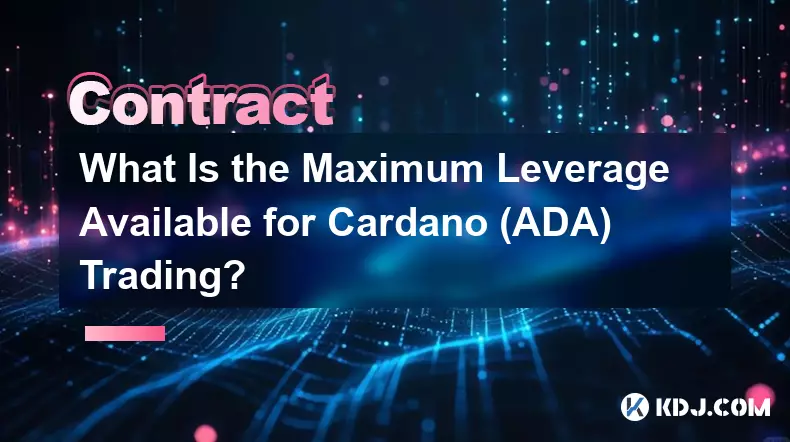
What Is the Maximum Leverage Available for Cardano (ADA) Trading?
Oct 26,2025 at 12:18pm
Understanding Leverage in Cardano (ADA) Trading1. Leverage allows traders to control a larger position using a smaller amount of capital. In the conte...

What Are the Fees Involved in Trading Solana (SOL) Perpetual Swaps?
Oct 26,2025 at 07:36am
Fees Structure in Solana Perpetual Swap Trading1. Trading perpetual swaps on Solana-based decentralized exchanges involves several types of fees that ...

How to Trade Ethereum (ETH) Breakouts with High Leverage Safely?
Oct 26,2025 at 02:19am
Understanding High Leverage in Ethereum Trading1. High leverage allows traders to control large positions with relatively small capital, amplifying bo...

What Is the Best Leverage for a Beginner Trading Bitcoin (BTC)?
Oct 26,2025 at 07:00am
Understanding Leverage in Bitcoin Trading1. Leverage allows traders to borrow capital to increase the size of their trading positions beyond what thei...
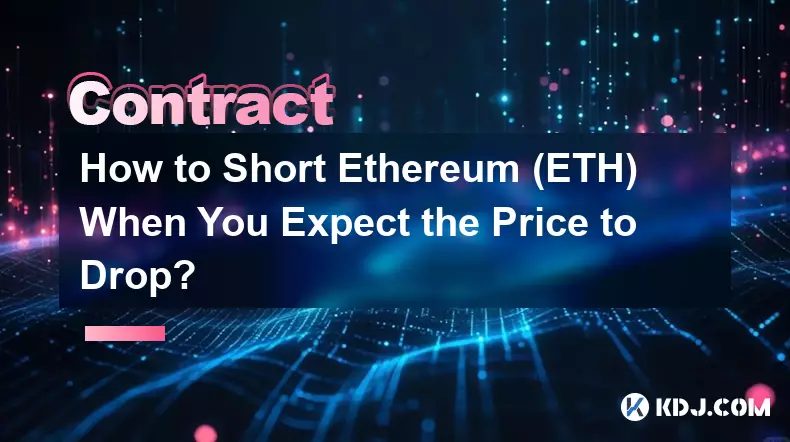
How to Short Ethereum (ETH) When You Expect the Price to Drop?
Oct 25,2025 at 05:18pm
Understanding Short Selling in the Cryptocurrency Market1. Short selling Ethereum means borrowing ETH and selling it at the current market price with ...
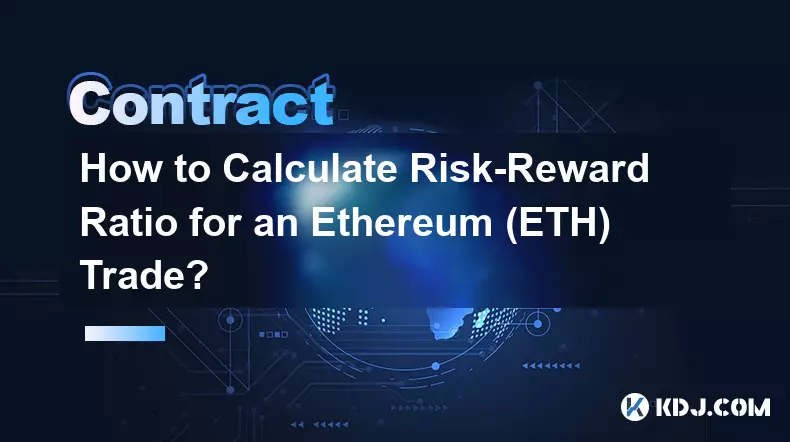
How to Calculate Risk-Reward Ratio for an Ethereum (ETH) Trade?
Oct 26,2025 at 09:55am
Understanding the Risk-Reward Ratio in Crypto TradingThe risk-reward ratio is a critical metric used by traders to evaluate the potential profitabilit...

What Is the Maximum Leverage Available for Cardano (ADA) Trading?
Oct 26,2025 at 12:18pm
Understanding Leverage in Cardano (ADA) Trading1. Leverage allows traders to control a larger position using a smaller amount of capital. In the conte...

What Are the Fees Involved in Trading Solana (SOL) Perpetual Swaps?
Oct 26,2025 at 07:36am
Fees Structure in Solana Perpetual Swap Trading1. Trading perpetual swaps on Solana-based decentralized exchanges involves several types of fees that ...

How to Trade Ethereum (ETH) Breakouts with High Leverage Safely?
Oct 26,2025 at 02:19am
Understanding High Leverage in Ethereum Trading1. High leverage allows traders to control large positions with relatively small capital, amplifying bo...

What Is the Best Leverage for a Beginner Trading Bitcoin (BTC)?
Oct 26,2025 at 07:00am
Understanding Leverage in Bitcoin Trading1. Leverage allows traders to borrow capital to increase the size of their trading positions beyond what thei...

How to Short Ethereum (ETH) When You Expect the Price to Drop?
Oct 25,2025 at 05:18pm
Understanding Short Selling in the Cryptocurrency Market1. Short selling Ethereum means borrowing ETH and selling it at the current market price with ...

How to Calculate Risk-Reward Ratio for an Ethereum (ETH) Trade?
Oct 26,2025 at 09:55am
Understanding the Risk-Reward Ratio in Crypto TradingThe risk-reward ratio is a critical metric used by traders to evaluate the potential profitabilit...
See all articles




































































